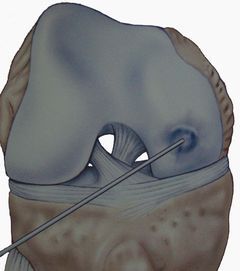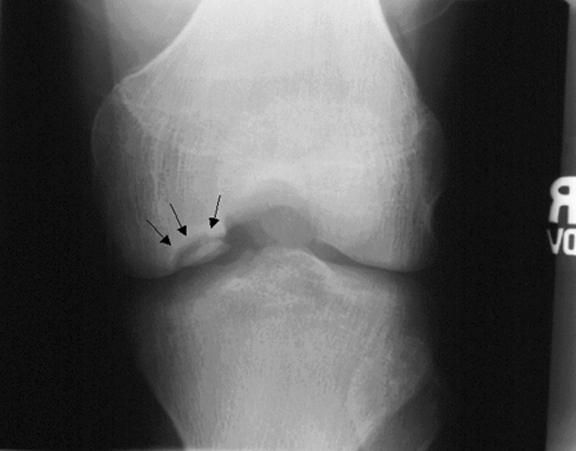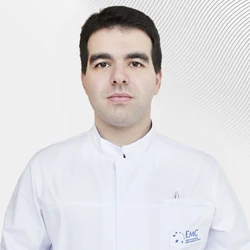Cutting osteochondritis
 Koenig's disease, or dissecting osteochondritis of the knee joint, is a disease characterized by limited subchondral necrosis of the epiphysis area of the knee joint bones. The pathological process was first described by the German surgeon Koenig in 1888.
Koenig's disease, or dissecting osteochondritis of the knee joint, is a disease characterized by limited subchondral necrosis of the epiphysis area of the knee joint bones. The pathological process was first described by the German surgeon Koenig in 1888.
The disease is most common in young people (18 to 35 years old), especially in athletes engaged in active sports. Localization of the process is more often noted in the area of the inner condyle of the thigh, that is, only in those areas that are subjected to the greatest functional load.
Long-term overload and repeated microtraumatization of the condyles of the femur lead to a relative insufficiency of blood supply, a violation of the bone structure, with the further formation of a focus of aseptic necrosis (destruction of bone beams and death of osteocytes). In the future, it is possible to separate a section of articular cartilage from the subchondral bone - the formation of a free bone-cartilaginous body and a defect in the articular surface. Koenig's disease begins with minor discomfort, aching pain and swelling in the knee joint, which increases with physical exertion. To diagnose the disease at this stage, careful analysis of anamnestic, clinical, radiological and MRI data is necessary, since there are no pathognomonic (specific) symptoms. The nature of physical activity and the weight of the patient are taken into account, and bone thinning in the area of developing aseptic necrosis and compaction of the surrounding bone can be determined on radiographs. MRI is used to exclude damage to the menisci and other soft tissue structures, as well as to better visualize the lesion. Early diagnosis can help reduce stress in time, conduct intensive conservative treatment and stop the development of the disease in young patients.
Koenig's disease begins with minor discomfort, aching pain and swelling in the knee joint, which increases with physical exertion. To diagnose the disease at this stage, careful analysis of anamnestic, clinical, radiological and MRI data is necessary, since there are no pathognomonic (specific) symptoms. The nature of physical activity and the weight of the patient are taken into account, and bone thinning in the area of developing aseptic necrosis and compaction of the surrounding bone can be determined on radiographs. MRI is used to exclude damage to the menisci and other soft tissue structures, as well as to better visualize the lesion. Early diagnosis can help reduce stress in time, conduct intensive conservative treatment and stop the development of the disease in young patients.
In the case of disease progression and separation of the bone-cartilaginous fragment, the clinical picture becomes brighter. The increased pain syndrome is joined by periodic blockages of the joint by the "articular mouse". The data of radiation research methods – radiography and MRI - are also more pronounced. However, conservative treatment is futile at this stage of the process.
The purpose of surgical treatment of Koenig's disease is to restore congruence of articular surfaces and improve nutrition of the subchondral bone in the area of the defect, which leads to a reduction in pain and is the prevention of osteoarthritis. The main surgical interventions are bone–cartilage fragment refixation, subchondral bone tunneling and mosaic chondroplasty.Why the EMC
The first and only clinic in Russia, created in the image of the world's leading clinics
EMC is a multidisciplinary center offering patients a high level of medical services and a personalized approach
Worldwide recognition and awards
 Learn more
Learn more
Worldwide recognition and awards
 Certificates and licenses
Certificates and licenses
Make an appointment for a consultation
Specify your contacts and we will contact you to clarify the details
Reviews
and new products of the EMC












.webp)




.webp)


